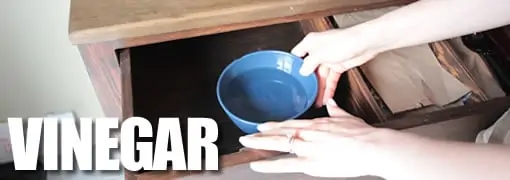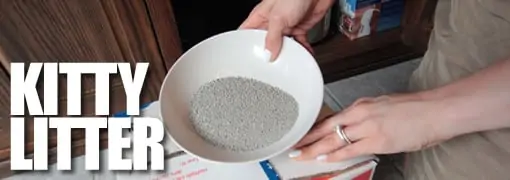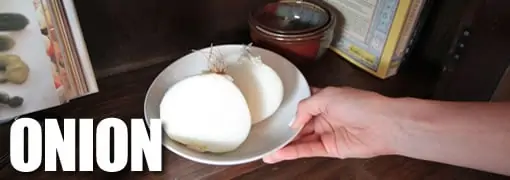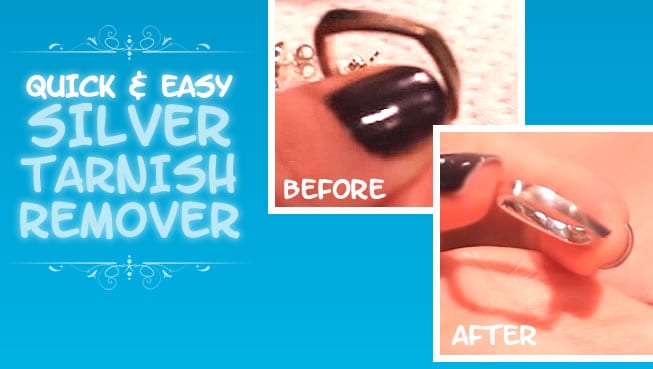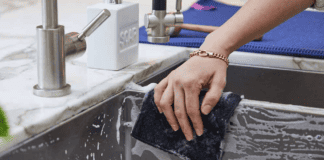I love antiquing. I’ve searched high and low and have taken home everything from gorgeous jewelry to old magazines, mirrors and frames and even larger furniture pieces. Our latest acquisition is a gorgeous kitchen hutch that we found in a barn (well, it was an antiques barn), somewhere in rural Ontario.
It fit perfectly in our kitchen, it holds everything from cookbooks to small appliances and a lot in between. But – it unfortunately carries as much a stench as it does character.
If you antique and have experienced that unmistakable barn-y stench lingering on your furniture, you’ve probably wondered how to rid yourself of that antique stank. So, I thought I’d show you how!
Here are some antique odour removal tips I’ve been researching.
I figure I would demonstrate them and put them to the test for all of you (and me). Now remember, you don’t want to simply mask the odour with an air freshener type product or scented candle or oil, that will do nothing. It’s like putting perfume on instead of taking a shower after a long, sweaty day. Gross, you should know better.
A few things I’ve tried with varying success
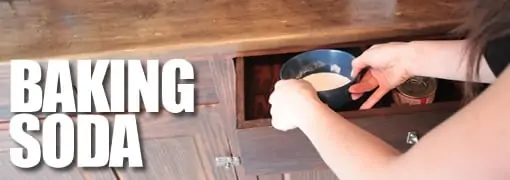
I usually rely on this for deodorizing and yes, this old tried and true method can work, however for really old smelly stuff I have not found it to be successful.
So, after giving 2 bowls of baking soda a week in my hutch, I kicked it to the curb.
I’d rate this method for deodorizing a smelly antique a 3/10.
Yes, this does deodorize but it’s not quite strong enough in my opinion to take these odours away. I find it works better at removing food and cigarette odours.
What you do is pour vinegar (perhaps a cup) into a bowl and just let it sit in open air to deodorize and absorb mild odours.
I’d rate this method for deodorizing a smelly antique a 2/10.
I know! Well, people have talked about this working. You scoop some fresh litter into a bowl and let it sit inside the antique. Just be sure you don’t leave an opening for your cats, they may think their commode just got upgraded and leave you a thank you gift.
This worked actually quite well. For some reason we have scented kitty litter (I think it was on sale), so it left an artificial floral scent that I was not too fond of. I counteracted that by leaving a bowl of baking soda in the drawer for a day once the litter came out and the fake floral smell was gone.
I’d rate this method for deodorizing a smelly antique a 7/10.
Why the heck would an onion, potentially the stinkiest of all vegetables, be a good idea for deodorizing an antique? Despite how incredibly counter-intuitive this sounds, apparently the sulfuric compounds in an onion (yes, the same ones that make you cry) will absorb the old musty smells and totally neutralize the piece within 24 hours.
Simply cut the onion in half, place it in a bowl and stick in the furniture somehow (drawer etc.) and leave it for 24 hours.
I found the onion smell to be really strong actually, despite what some other people have said about this method. It did remove some of the odour but it left behind a strong odour afterward. I used the same method as the kitty litter instance; placed a bowl of baking soda in to remove the onion smell afterward. That seemed to neutralize the onion odour and also the musty smell of the drawer dissipated.
I’d rate this method for deodorizing a smelly antique a 6/10.
Fresh air?
Airing out is also very effective, so opening all doors and drawers and leaving the item by a window for a few days will help too.
For more ideas on how to get your house smelling beautiful, check out our E-Book The Complete Guide to Essential Oils.
That’s a wrap
What I found, after testing these various methods in 4 separate and blocked off compartments in my hutch, is that they’ll work to varying degrees but the smell will also just dissipate over time. And that’s not me just having a case of olfactory adaptation; I have a very sensitive sense of smell. We’ve left our back patio door open during the early parts of the summer (non-heat wave days) and it has helped. The piece still does smell, but to a lesser degree than when we first got it. I am sure over the next few months the smell will dissipate even more.
So as you can see, there is no magic bullet solution to this very malodorous problem, but we do what we can and do our best to enjoy our antiques. Perhaps the smell is indicative of the age and properties of the piece, much like an aged wine or cheese. Perhaps we embrace that barn-y, musty smell. We invite our friends over to sniff our latest pieces. OK, I’m getting a little side tracked here, but you get the idea.
What are your experiences with deodorizing antiques?
What has worked for you?
Let us know in the comments section below!
Don’t forget to check out Maker’s Clean line of premium products. From microfiber cloths to the Maker’s Mop, they have a great line of high-quality products that will help you take your cleaning game to the next level!D

Looking for a BETTER & EASIER Way to Clean Your Home?
Cleaning Expert Melissa Maker is here to help with her game-changing 3 Wave Cleaning System that will help you clean your house faster and easier than you ever thought possible!



